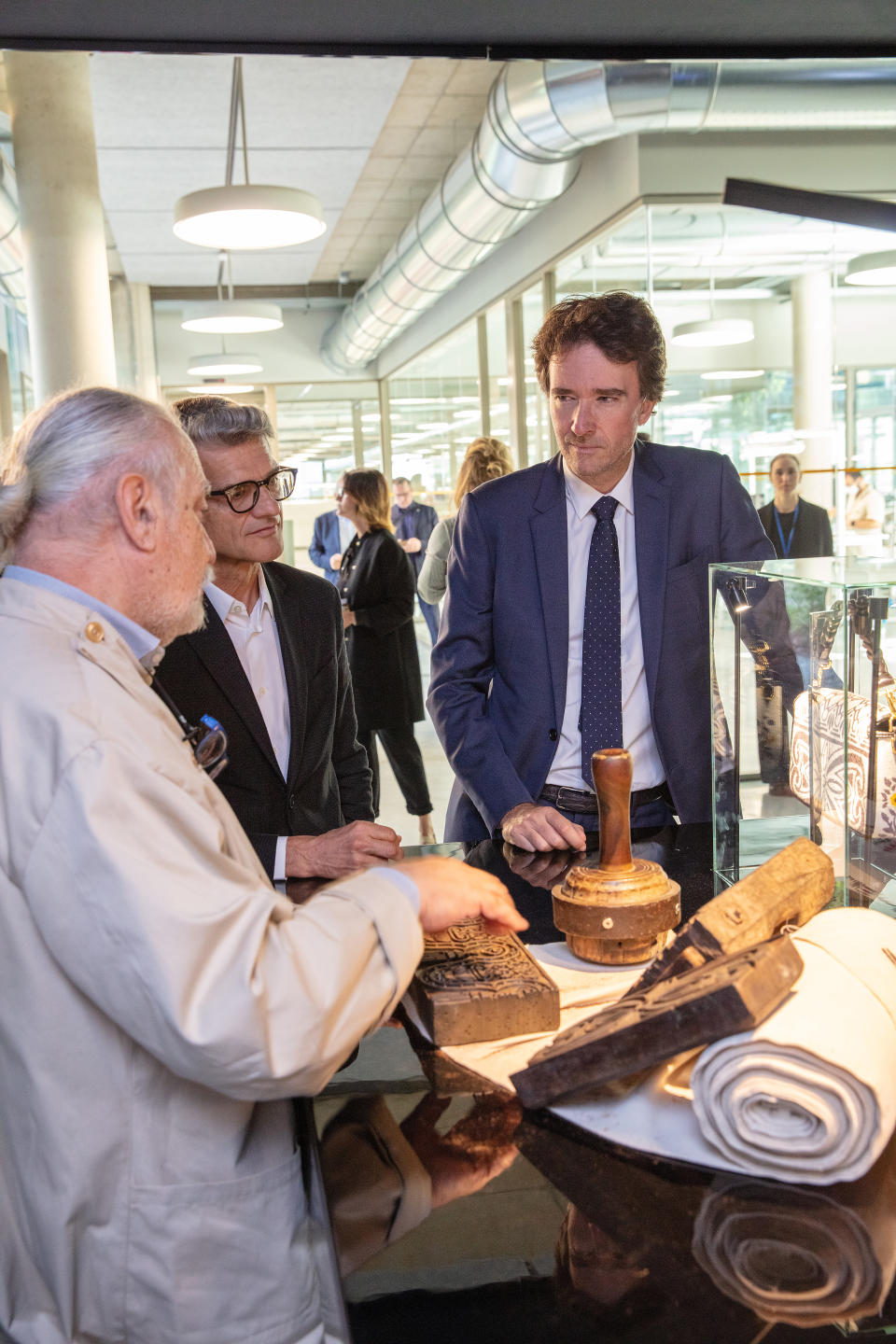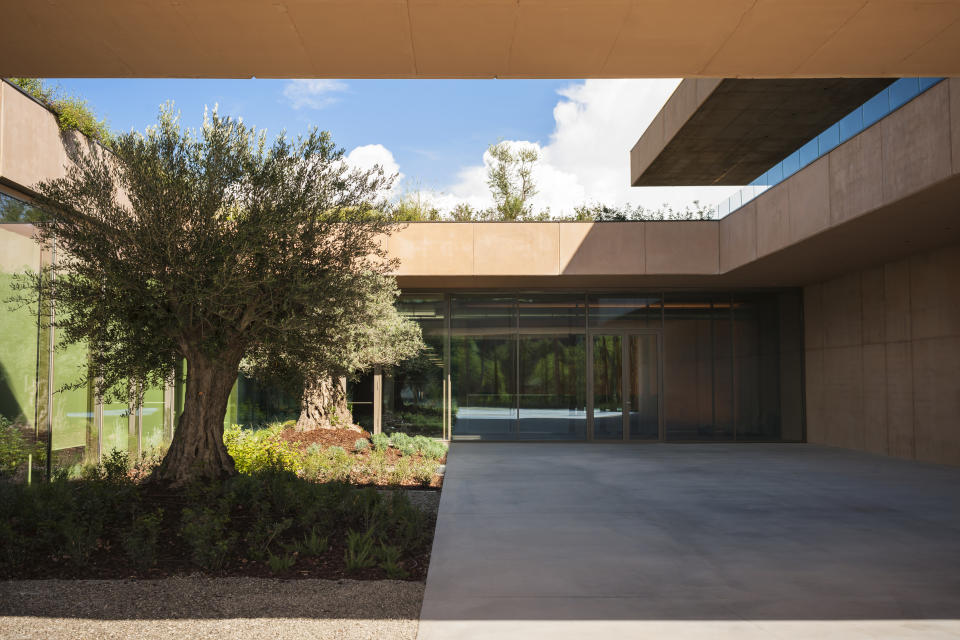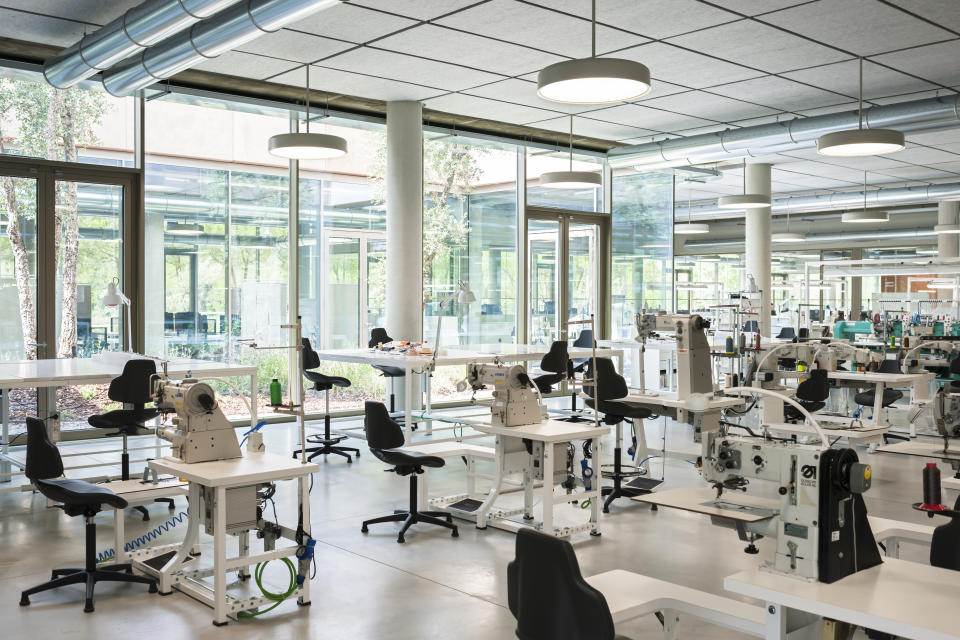Fendi Unveils New State-of-the-art Accessories Plant

CAPANNUCCIA, Italy — Beauty can only lead to beauty. So believes Serge Brunschwig, chairman and chief executive officer of Fendi who, with Antoine Arnault, head of image and environment at parent company LVMH Moët Hennessy Louis Vuitton, on Wednesday unveiled the brand’s new sprawling plant in Tuscany, Italy.
Indeed, the site is beautiful, seamlessly nestled into the region’s countryside and conceived with the goal for its artisans and employees to benefit from the natural sunlight and the impressive landscape outside.
More from WWD
The plant, which produces some of Fendi’s most iconic bags, from the Baguette to the Peekaboo, and small leather goods, is inserted into the landscape where an abandoned kiln lay, the Fornace Brunelleschi.
Based in Capannuccia, Bagno a Ripoli, a 30-minute drive from Florence, it telegraphs Fendi’s ongoing commitment toward environmental sustainability and social responsibility, offering improved efficiency and a beautiful location to work in. “Natural light is so important for the sight of artisans, who day after day carefully and meticulously cut, stitch and create the products,” said Silvia Venturini Fendi, artistic director of Fendi accessories and menswear.
“At the LVMH level, it’s always such a pleasure to work with Fendi and its teams because they have the best mind-set in sustainability, they always see new objectives as opportunities, not as constraints,” Arnault said in a joint interview with Brunschwig. “They bring us new ideas; they are always at the pinnacle compared to what is being done by competitors also in other industries and they challenge us and it’s great.”

Arnault said that while Fendi may not share the same point of view on some topics with Stella McCartney, also under the LVMH umbrella, they dovetail “on this push for exemplarity and on sustainability issues. It’s a given for them, while sometimes other teams need to be convinced a little bit more. Of course we can’t deny we are manufacturers but we must be so in a responsible way.”
The building is developed on one main level, housing all the functions, from production of prototypes and laboratories to offices and services, with huge glass windows a common element of each area. There is a basement for parking and a first floor with the canteen directly overlooking the roof garden.
The complex, which produces around 200,000 pieces a year, is surrounded by seven hectares of greenery, over an area spanning 324,000 square feet.
A 700 olive tree grove is seen throughout all areas of the park, allowing the production of oil from the factory itself of up to 900 liters a year.
Inside the building, nine glazed courtyards shed light on interior spaces. Each courtyard is characterized by Mediterranean scrub tree species — fig, holm oak, pomegranate, osmanthus, acacia, oak and strawberry tree, among others.
“We are super happy and proud; we think it’s the beginning of a new era,” said a beaming Brunschwig.
Marco de Vincenzo, who was named creative director of Etro last May but continues to work on accessories as a consultant at Fendi and attended the official unveiling of the plant with regional dignitaries, agreed on the fact that “a location must be stimulating to foster creativity. Beauty must be generated by something that resembles it. A factory is a magic place, I chose this job after seeing the production of handbags, this changed my perspective entirely. If people only knew what’s behind a product…”
Leonardo Simonti, Fendi worldwide architecture director, said the idea right from the start was “to perfectly integrate the plant within the hills,” and to this end, the external walls are made with a natural mix of clay and concrete in an earthy tone, reflecting the shades of the Tuscan hillside. Fendi has added 64,000 trees and aromatic shrubs to the location.
Inside, several walls are embellished by terracotta tiles with the graphic double F logo made by hand. Terracotta is also a reference to the preexisting kiln. A large helicoidal staircase connects the main ground floor with the canteen’s upper floor.
Offices and production furniture are in the neutral shades of white, but pieces of Fendi-branded furniture pepper some areas.
In addition, Fendi has created a public park nearby, opposite a kindergarten, featuring playgrounds and wide benches.
The initial concept of the plant was developed by Milan-based architecture firm Piuarch and has then been advanced and coordinated by Fendi’s architecture department.

Brunschwig was pleased that the project was completed in two years, as planned, and has created 350 new jobs, which will double in the next five years. In addition to helping Fendi increase its control over the pipeline, the executive underscored that the plant is part of an initiative to train new generations of artisans and to communicate to future generations that this can be “a job for life,” which can provide much satisfaction.
“It’s important to talk about the value of being an artisan, it can’t all be virtual and intangible,” said Venturini Fendi, explaining that the company’s artisans are each capable of creating an entire bag, not only one part of it, “otherwise the job can be very repetitive, while with us it’s very dynamic and there is pride in seeing the accessory take shape from beginning to end.” Fendi is supporting the “Adopt a School” project in Scandicci for bags and in Fermo for shoes to train new artisans.
The factory is expected to be the first Fendi plant to reach the prestigious LEED Platinum certification by 2023.
Brunschwig said the plant represented a significant step into Fendi’s work on biodiversity, circularity and eco-design. “We make progress project by project, it’s not perfect at 360 degrees. We are still consuming energy but we’ve added solar panels and stock rain water for additional capacity. We do our best because we don’t believe in doing nothing, whatever we do is an improvement. We’ve been doing very important work with LVMH and we motivate everybody because we have clear objectives.”
Arnault concurred that “giant steps in this direction cannot happen, we have an agile organization but it can’t be rocked. You can’t rock a big ship too abruptly, but every day we take small steps in the right direction, with ambitious, long-term objectives. Everybody understands how important sustainability is. It can’t simply be a footnote on your website; it’s really top of mind for clients and partners and people we work with. Our future depends on it.”



